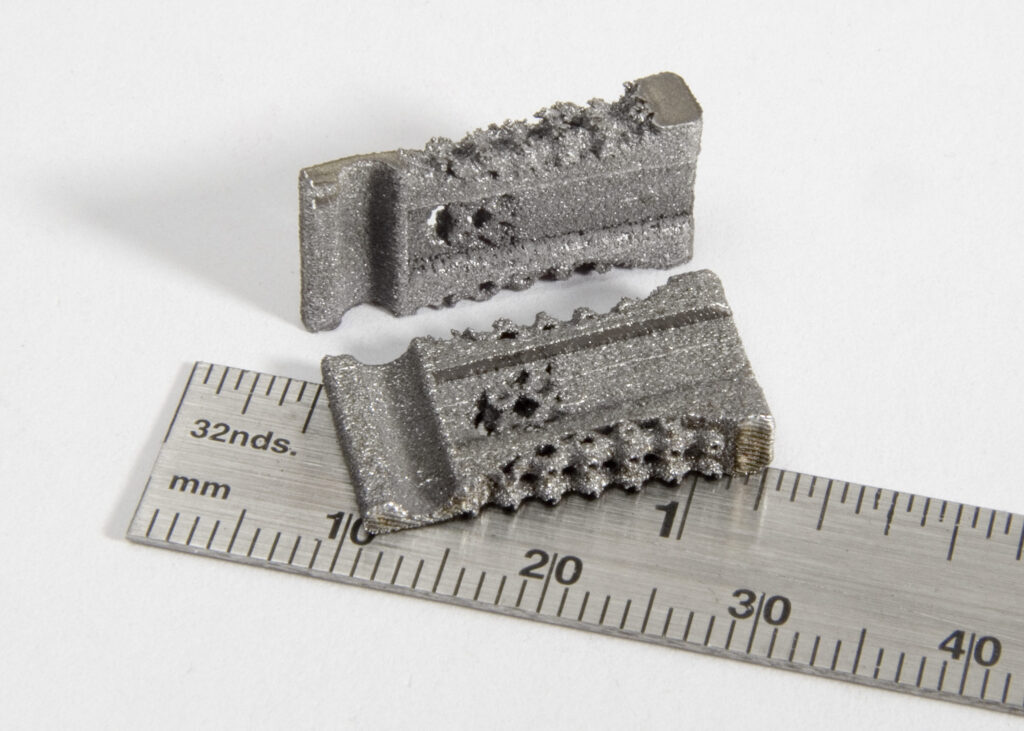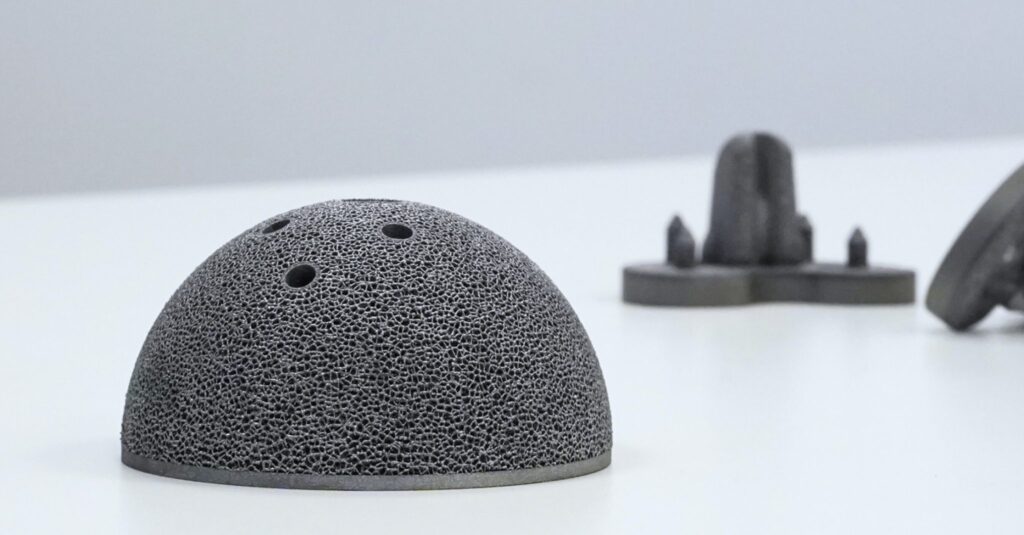Announced just months after the two companies formalised their strategic partnership, TALOS represents a major leap forward in the commercial viability of 3D printed tantalum components. Tantalum, a rare and highly valued metal, has long been recognised for its outstanding biocompatibility, corrosion resistance, and fatigue strength. However, due to complex processing challenges, its adoption in additive manufacturing has remained limited, until now.
Croom Medical and Global Advanced Metals joined forces earlier this year with a shared goal: to develop a closed-loop supply chain for 3D printable tantalum powder. Their work culminated in the TALOS platform, which has now transitioned from research to full commercial deployment.
Available through Croom Medical’s contract manufacturing services, TALOS offers full support for both prototype development and volume production, making it a scalable solution for medical device manufacturers looking to harness tantalum’s powerful material characteristics.
“Tantalum has long been valued for its biointegration and mechanical resilience, yet its full potential has been locked behind processing barriers,” said Dr. Shane Keaveney, R&D Manager at Croom Medical. “With TALOS, we unlock those intrinsic qualities, enabling engineers to precisely control implant ductility and strength to more closely mirror the behavior of native bone.
One of TALOS’s most compelling features is its ability to produce complex, porous, yet robust structures, optimised for both medical and industrial use. Leveraging cellular lattice structures and precise control over print parameters, TALOS allows engineers to fine-tune critical characteristics such as elastic modulus, density, and ductility, factors essential for reducing stress shielding and enhancing implant longevity.
TALOS-printed implants can achieve densities of up to 99.99% and elongation exceeding 40%, significantly reducing fracture risks. Moreover, the platform introduces a groundbreaking hybrid printing capability, enabling direct deposition of tantalum onto titanium substrates. This fusion combines tantalum’s superior osteoconductivity with titanium’s lightweight structure, opening the door to next-generation implants with enhanced bone fixation.

While TALOS is initially geared toward orthopaedic and spinal implants, Croom Medical and Global Advanced Metals are also eyeing opportunities in sectors such as power generation, chemical processing, and high-temperature engineering.
The platform supports the production of near-net-shape components with intricate design features including controlled porosity zones, surface textures, internal cooling channels, and mixing architectures, making it well-suited for demanding industrial applications that require tailored thermal and mechanical performance.
Crucially, TALOS was also developed with sustainability in mind. The platform exclusively uses ethically sourced, conflict-free tantalum powder, adhering to stringent supply chain transparency standards. Any unused or surplus powder is returned to Global Advanced Metals for refinement and reprocessing, reinforcing a circular economy model that reduces waste and conserves raw materials.
“TALOS aligns with our mission to advance next-generation manufacturing technologies,” added Dr. Keaveney. “Not only does it improve patient outcomes through better implants, but it also reduces the need for revision surgeries, lowering both patient discomfort and healthcare costs.”
The launch of TALOS marks a significant milestone in the ongoing evolution of additive manufacturing for medical applications. With its unique blend of material science, engineering precision, and sustainable sourcing, the platform represents a compelling alternative to traditional implant manufacturing methods, one that promises enhanced bio-integration, customisation, and performance durability.
As the healthcare sector continues to demand smarter, more efficient solutions, and as industrial applications expand into new frontiers, the partnership between Croom Medical and Global Advanced Metals stands out as a bold blueprint for innovation in the age of digital manufacturing.



